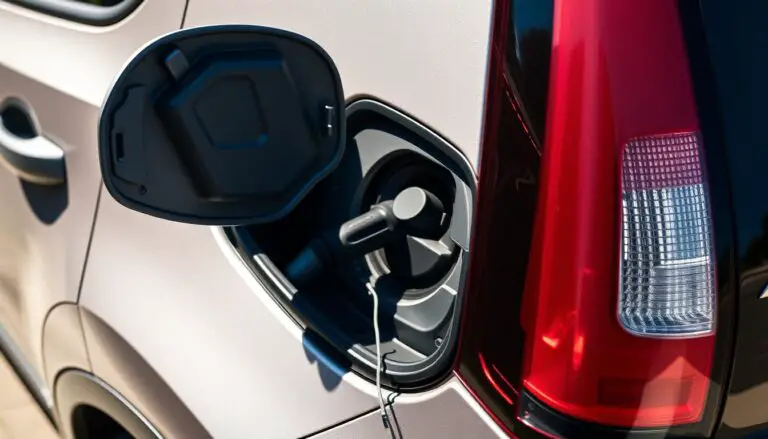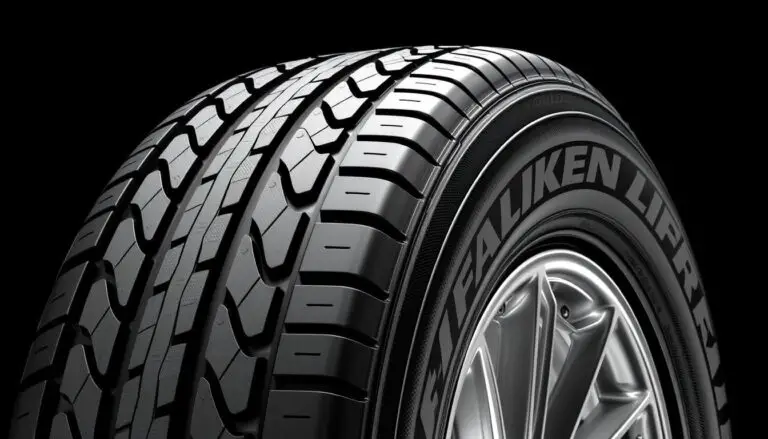Modern vehicles are equipped with advanced braking systems, including Anti-Lock Braking Systems (ABS), designed to enhance safety on the road. However, there may be situations where disabling ABS is necessary or preferred. It’s crucial to understand the implications of doing so and the potential risks involved.
The braking system is a critical component of vehicle safety, and modifications to it should be approached with caution. Disabling ABS can affect the overall safety and performance of the vehicle. Therefore, it’s essential to be aware of the safety considerations before making any changes.
Key Takeaways
- Understand the role of ABS in vehicle safety.
- Recognize the potential risks of disabling ABS.
- Consider the implications for the overall braking system.
- Be aware of the necessary precautions when modifying ABS.
- Evaluate the impact on vehicle performance and safety.
Understanding Anti-Lock Braking Systems
Anti-lock braking systems (ABS) are a crucial safety feature in modern vehicles, designed to prevent wheels from locking up during hard braking. This functionality is critical for maintaining traction and preventing skidding, thereby ensuring the vehicle remains controllable.
What Are Anti-Lock Brakes and How Do They Work?
Anti-lock brakes work by rapidly pulsing the brakes on and off, a process that happens so quickly it’s imperceptible to the driver. This pulsing action prevents the wheels from locking up, allowing the driver to maintain steering control. The system uses speed sensors on each wheel to monitor rotation speed and adjust braking accordingly.
Why Someone Might Want to Disable ABS
Some drivers might consider disabling ABS for specific reasons, such as racing or driving in certain conditions where ABS might be deemed unnecessary or counterproductive. However, it’s crucial to understand the potential risks and legal implications before making such a decision.
| Reasons for Disabling ABS | Potential Risks |
|---|---|
| Racing or performance driving | Increased risk of skidding and loss of control |
| Driving in specific conditions | Reduced safety in emergency braking situations |
Safety Considerations Before Disabling ABS
The decision to disable ABS should not be taken lightly, as it involves complex safety considerations and potential legal ramifications. Before proceeding, it’s crucial to understand the implications of such a modification on your vehicle’s safety and performance.
Legal Implications of Disabling ABS
Disabling ABS can have significant legal implications. In many jurisdictions, tampering with or disabling safety features like ABS is against the law and can result in fines or voided warranties. For instance, the National Highway Traffic Safety Administration (NHTSA) has strict regulations regarding vehicle safety standards. Modifying ABS may violate these standards, potentially leading to legal consequences. As noted by the NHTSA, “tampering with safety equipment can have serious legal repercussions.”
“Tampering with safety equipment can have serious legal repercussions.”
Safety Risks and Precautions
Disabling ABS also poses significant safety risks. ABS is designed to prevent wheels from locking up during hard braking, thereby maintaining traction and preventing skidding. Without ABS, the risk of wheel lockup and loss of control increases, especially on slippery surfaces. To mitigate these risks, it’s essential to take precautions for brake modification and consider alternative braking techniques. Drivers should be aware of the increased stopping distances and potential loss of vehicle control.

Understanding these risks and taking appropriate precautions can help minimize the dangers associated with disabling ABS. It’s vital to weigh these factors carefully before making any modifications.
Tools and Materials Needed for Disabling Anti-Lock Brakes
Before you start disabling your vehicle’s Anti-Lock Braking System (ABS), it’s crucial to gather the necessary tools and materials. Having the right equipment ensures the process is done safely and effectively.
Essential Tools for the Job
The following tools are essential for disabling ABS:
- A socket set for accessing the ABS module
- Pliers for handling wiring and connectors
- A fuse puller for removing the ABS fuse
- Torx or Allen wrenches for specific bolts
Optional Equipment That May Help
While not necessary, the following equipment can make the process easier:
| Equipment | Purpose |
|---|---|
| Multimeter | For checking electrical circuits |
| Wire strippers | For modifying ABS wiring |
| OBD-II scanner | For diagnosing ABS-related trouble codes |
Step 1: Locating and Identifying ABS Components
Locating the ABS components is the first step in taking control of your vehicle’s braking system. The Anti-Lock Braking System is a complex network of components that work together to prevent wheel lockup during hard braking. Understanding the layout of these components is crucial for any modifications.
Finding the ABS Control Module
The ABS control module, also known as the ABS controller or ECU (Electronic Control Unit), is typically located in the engine compartment or under the dashboard. It’s usually a rectangular or square box with connectors attached to it. To find it, consult your vehicle’s repair manual or look for a diagram that shows the location of the ABS components.
Identifying ABS Fuses, Relays, and Wiring
In addition to the ABS control module, you need to identify the fuses, relays, and wiring associated with the ABS. These components are usually found in the fuse box or relay panel, and their exact location can vary depending on your vehicle’s make and model. Check your vehicle’s documentation or a repair manual to determine the specific fuses and relays related to the ABS.
- Check the fuse box for labeled fuses related to ABS.
- Identify relays associated with the ABS system.
- Trace the wiring from the ABS control module to understand the system’s electrical layout.
By carefully locating and identifying these components, you’ll be better equipped to proceed with disabling your vehicle’s ABS. Remember to exercise caution when working with electrical and braking systems.
Step 2: Disconnecting the Battery Safely
Safety first: disconnect the battery before ABS modifications to avoid electrical hazards and unintended engine starts. This crucial step ensures your safety and the integrity of your vehicle’s electrical system.
Proper Battery Disconnection Procedure
To disconnect the battery safely, follow these steps:
- Turn off the engine and all electrical accessories.
- Locate the battery and identify the negative (-) and positive (+) terminals.
- Loosen the nut on the negative terminal clamp and remove the clamp from the terminal.
- Repeat the process for the positive terminal.
By following this sequence, you minimize the risk of a short circuit.
Ensuring Electrical Safety During the Process
To ensure electrical safety, wear protective gear such as gloves and safety glasses. Make sure the work area is well-ventilated to prevent the accumulation of potentially explosive gases emitted by the battery.
Additionally, be cautious of any sharp edges or exposed wires. By taking these precautions, you can prevent electrical shock and ensure a safe working environment.
Step 3: How to Disable Anti Lock Brakes in 7 Simple Steps
Disabling Anti-Lock Braking Systems (ABS) can be achieved through several methods, each with its own set of considerations. It’s crucial to understand these approaches to make an informed decision.
Method 1: Removing the ABS Fuse
One common method to disable ABS is by removing the ABS fuse. This approach is relatively straightforward and doesn’t require extensive technical knowledge. However, it’s essential to consult your vehicle’s manual to locate the ABS fuse and understand the implications of removing it.
Risks: Removing the fuse might trigger a warning light on your dashboard, and it could potentially affect other systems connected to the same circuit.
Method 2: Disconnecting the ABS Module
Disconnecting the ABS module is another method to disable the ABS. This involves locating the ABS control module, usually found under the dashboard or in the engine compartment, and disconnecting its electrical connector.
Precautions: Ensure the vehicle is parked on a level surface and apply the parking brake before starting work. Be cautious of the electrical components to avoid damage.
Method 3: Modifying the ABS Wiring
Modifying the ABS wiring is a more complex and risky approach. It involves altering the wiring connected to the ABS sensors or the control module. This method requires advanced technical knowledge and should be approached with caution.
Warning: Improper modifications can lead to serious safety issues, including brake failure. It’s recommended to seek professional help if considering this method.
| Method | Complexity | Risks |
|---|---|---|
| Removing ABS Fuse | Low | Warning Lights, Potential Circuit Issues |
| Disconnecting ABS Module | Moderate | Electrical Component Damage |
| Modifying ABS Wiring | High | Brake Failure, Safety Risks |
Each method has its advantages and disadvantages. It’s crucial to weigh these factors and consider your skill level before proceeding.
Step 4: Testing Your Braking System After Modification
Testing your braking system after disabling ABS is a critical step to ensure you can operate your vehicle safely. After modifying your vehicle’s Anti-Lock Braking System, it’s crucial to understand how the braking system behaves without this safety feature.
To perform a safe brake test, find a controlled environment such as an empty parking lot. Start by driving at a moderate speed, around 20-30 mph, and then apply the brakes firmly. Observe how the vehicle responds. Without ABS, the brakes may lock up, causing the vehicle to skid. It’s essential to be prepared for this and know how to handle it.
Performing a Safe Brake Test in a Controlled Environment
When testing your brakes, ensure you’re in a safe location away from traffic. Start with low speeds and gradually increase as you become more comfortable with the vehicle’s braking behavior. Pay attention to any unusual noises or vibrations when applying the brakes.
What to Expect with Disabled ABS
With ABS disabled, you may notice longer stopping distances and a different brake pedal feel. The vehicle may pull to one side when braking, or you might experience wheel lock-up, leading to skidding. Understanding these changes is crucial for safe driving.
| Braking Condition | With ABS | Without ABS |
|---|---|---|
| Stopping Distance | Shorter | Longer |
| Brake Pedal Feel | Firmer | Different, may be softer or more spongy |
| Vehicle Control | Better control during hard braking | Potential for wheel lock-up and skidding |
As noted by automotive experts, “Disabling ABS requires a thorough understanding of the potential risks and how to mitigate them through proper testing and driving techniques.”
Proper testing and adjustment of driving habits are key to safely operating a vehicle without ABS.
Step 5: Addressing Warning Lights on Your Dashboard
Disabling ABS can trigger various warning indicators on your vehicle’s dashboard. These warning lights are designed to alert you to potential issues with your vehicle’s braking system.
Understanding ABS Warning Indicators
The ABS warning light typically illuminates when there’s a problem with the Anti-lock Braking System. Common causes include:
- Faulty ABS sensor
- ABS module malfunction
- Wiring issues
Understanding these indicators is crucial for maintaining vehicle safety.
Options for Dealing with Persistent Warning Lights
If the ABS warning light persists after disabling ABS, you have several options:
- Reset the ABS system: This may involve using a scan tool to clear fault codes.
- Use a code reader: To diagnose the specific issue triggering the warning light.
- Consult a professional: If you’re unsure about how to proceed.
Ignoring these warning lights can lead to decreased vehicle safety and reliability.
Step 6: Adapting Your Driving Technique
Driving without ABS demands a different approach to braking, emphasizing control and caution. When ABS is disabled, the vehicle’s braking system relies on the driver’s ability to modulate brake pressure effectively.
How to Brake Effectively Without ABS
To brake effectively without ABS, drivers should master threshold braking, a technique that involves applying the brakes to the point just before the wheels lock up. This method requires a feel for the vehicle’s braking threshold and the ability to modulate brake pressure.
It’s also crucial to understand that without ABS, the vehicle’s tendency to skid increases, especially on slippery surfaces. Drivers must be prepared to release the brakes slightly if the wheels start to lock up, then reapply them.
Situations Requiring Special Attention
Certain driving conditions require extra caution when ABS is disabled. Wet or slippery roads are particularly hazardous, as they increase the risk of wheel lock-up and skidding. Drivers should reduce their speed and increase following distances to compensate for the lack of ABS.
Additionally, drivers should be aware of the vehicle’s behavior during emergency braking and be prepared to make adjustments as needed to maintain control.
Step 7: Reversing the Process if Needed
The process of reinstating ABS functionality involves a few key steps. Whether due to changing driving conditions or legal requirements, restoring ABS can be a prudent decision.
When to Consider Restoring ABS Functionality
Restoring ABS functionality might be necessary if you find yourself driving in conditions where ABS is beneficial, such as slippery roads or high-speed highways. Additionally, if you’re selling your vehicle, having ABS enabled can be a significant selling point.
| Condition | Benefit of ABS |
|---|---|
| Slippery Roads | Improved stopping distance |
| High-Speed Highways | Enhanced vehicle control |
Steps to Reinstall or Reconnect ABS Components
To restore ABS functionality, you’ll need to reverse the steps taken to disable it. This involves reconnecting the ABS module, reinstalling the ABS fuse, or rewiring the ABS system, depending on the method used initially.
- Reconnect the ABS module to its original position.
- Reinstall the ABS fuse if it was removed.
- Rewire the ABS system if modifications were made.
After restoring ABS, it’s crucial to test your braking system to ensure it’s functioning correctly. This step is vital for your safety on the road.
Conclusion
Disabling Anti-Lock Braking Systems (ABS) requires careful consideration and a thorough understanding of the process. As outlined in the previous sections, the steps involved in disabling ABS include locating and identifying ABS components, disconnecting the battery safely, and modifying the ABS wiring or removing the ABS fuse.
When deciding to disable ABS, it’s crucial to weigh the benefits against the risks. While ABS is a critical safety feature, some drivers may prefer to disable it under specific circumstances. However, this modification can impact vehicle safety and performance. Ensuring that any modifications are made with a full understanding of the implications is vital.
In conclusion, disabling ABS is a complex process that demands attention to detail and a comprehensive understanding of the potential consequences. By following the steps outlined in this guide and considering the final considerations for brake modification, drivers can make informed decisions about their vehicle’s braking system.
FAQ
What are the potential risks of disabling Anti-Lock Brakes (ABS)?
Disabling ABS can increase stopping distances, lead to loss of vehicle control, and potentially cause skidding, especially on slippery or uneven surfaces.
Is it legal to disable ABS on my vehicle?
Disabling ABS may violate vehicle safety standards or insurance policy terms, so it’s essential to check local laws and regulations before making any modifications.
How do I know if my vehicle is equipped with ABS?
Check your vehicle’s owner’s manual or look for the ABS symbol on the dashboard, usually an illuminated light with the letters “ABS.”
Can I disable ABS without affecting other vehicle systems?
Disabling ABS may impact other safety systems, such as traction control or electronic stability control, as they often share components or rely on ABS functionality.
What are the different methods for disabling ABS?
Common methods include removing the ABS fuse, disconnecting the ABS module, or modifying the ABS wiring, each with its own risks and considerations.
How do I test my braking system after disabling ABS?
Perform a safe brake test in a controlled environment, such as an empty parking lot, to understand how your vehicle behaves without ABS.
Will disabling ABS trigger warning lights on my dashboard?
Yes, disabling ABS may trigger warning lights, and you may need to reset the ABS system or use specific tools to clear fault codes.
How do I adapt my driving technique without ABS?
Practice threshold braking, modulate brake pressure, and exercise extra caution on wet or slippery roads to safely drive without ABS.
Can I restore ABS functionality if needed?
Yes, you can reinstall or reconnect ABS components to restore functionality, and it’s recommended to do so if driving conditions or legal requirements change.
Are there any specific tools required to disable or restore ABS?
You may need wrenches, pliers, and potentially specialized equipment for accessing and modifying the ABS control module or wiring.


